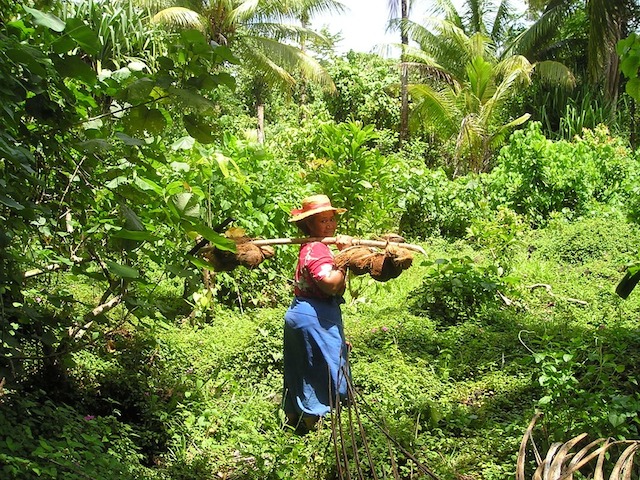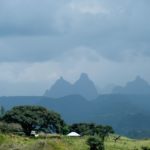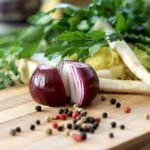Indulging in Traditional Samoan Food

Random online statistics say that American Samoa is the most obese place on the planet. From what I can see, this is due to two things: the Samoan diet and Samoan food.
The Samoan diet did not originate in Samoa. It started at Frito-Lay and McDonald’s and a million other Western junk food companies. Fatty foods are pervasive in Samoa. My students will tell me that their favorite restaurants are McDonald’s, KFC, and Carl’s Jr. At the bus stop in before school, parents will feed their elementary students chocolate pillows and taffy pops. There’s nothing like sending them off to school on a sugar high, headed for a crash.
But really, are the Samoans to blame? Fast and easy health food does not exist on this island. Foreign fruits and vegetables are either prohibitively expensive or halfway to decomposed. As an isolated dot in the middle of the ocean, it’s no simple feat to have berries and tomatoes shipped in.
I am often asked why I am so thin and if I am sick. People are constantly trying to feed me.
This lack of healthy food manifests itself in local attitudes too. When I’m eating a carrot, everyone around will ask if I’m on a diet. Once, while having celery sticks with lunch, a student asked me what I was eating. After I tried to explain, the student bewilderedly asked me, “Is it like a pickle?”
In Samoa though, big is beautiful. I am often asked why I am so thin and if I am sick. People are constantly trying to feed me. And when I’m lucky, they’re trying to feed me Samoan food.
Traditional Samoan food is very different from the Samoan diet. It is carefully planned, slowly prepared, and festively enjoyed.
Samoan food is cooked in an ‘umu or, as far as I can tell, a hole in the ground with hot coals in it. On top of the coals are placed many foil-wrapped dishes: palusami, pilikaki, pisupo. Most of these dishes consist of chopped onions in coconut milk with some other Samoan delicacy (read: canned mackerel or corned beef). All of these ingredients are wrapped in taro leaves, then tin foil, and put into the ‘umu for three or four hours.
My very first impression of taro was that it had the consistency of Play-Doh and the flavor of glue. Something I could have cooked up in my Little Tykes kitchen at the ripe old age of 3.
A whole pig is often cooked in the ‘umu too; usually for very special occasions. During one ‘umu I had the unfortunate of accompanying the pig through the entire ‘umu process, from life to decapitated on the dinner table. Although I was sad to see Babe go, I have to admit that the pork that night was fantastic.
Each of these dishes is accompanied with a Samoan starch: either breadfruit, taro root, or green bananas. My very first impression of taro was that it had the consistency of Play-Doh and the flavor of glue. Something I could have cooked up in my Little Tykes kitchen at the ripe old age of 3. But as I’ve gotten more exposed to Samoan food, I’ve come to tolerate and even like taro. It’s a great side dish, and I think it should start being offered as an alternative to fries at restaurants across the world.
Indulging in Traditional Samoan Food.
All parts of the ‘umu added together become one very time-consuming activity. To have an ‘umu prepared before church on Sunday, the men of a family will typically wake up at 3 or 4 am to begin cooking. But in Samoa ono sa’i, patience, is a way of life.
I know that when I leave Samoa I will miss the unique delicious dishes that I’ve gotten accustomed to here. There is no chance that I will be digging an ‘umu at 3 am outside of my apartment in the States. So I will have to do my best to enjoy the traditional food while I’m here. And maybe I can become big and Samoan beautiful along the way.
Photo credit for Indulging in Traditional Samoan Food by Pixabay.









great article! I am Samoan and am not offended by this. It is true indeed.
kefe ahahahahahahaha.